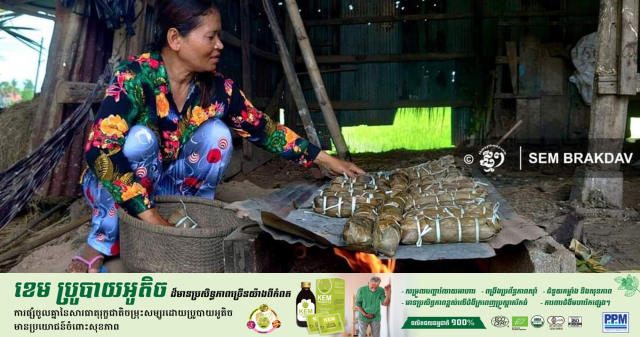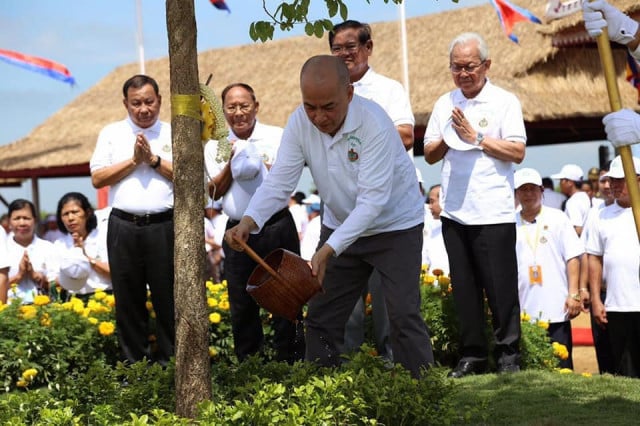The Hindu Influence on Cambodian Cakes during Pchum Ben

- By Ky Soklim
- October 7, 2023 2:00 PM
PHNOM PENH – Cambodians casually practise a mix of Buddhism and Hinduism. In October, a culturally significant celebration called Pchum Ben is conducted when people visit pagodas and their hometown.
Three prominent cakes are traditionally baked during this celebration, the ansom cake, the korm cake and the bot cake. So, what is the backstory of these cakes?
As Cambodia used to practice Hinduism strongly for centuries and thousands of temples were built to worship Hindu figures, the story of these cakes is also religious.
“The cakes were most likely to be introduced to Cambodia when Kaundinya [an Indian merchant] came to Cambodia,” said Heang Rith, a researcher in Khmer culture and tradition.
Religiously, ansom cake, generally made with pork or banana at the core, represents Lord Shiva or Lingam, a depiction of male fertility. Korm cake represents Lord Shiva’s wife, Uma, also a depiction of female fertility. Bot represents the earth with its own lengthy Hindu mythological story.

“However, it does not always have to be Pchum Ben during which the three cakes can be made,” he added.
“They can be made in every other ceremony such as a wedding party, an engagement party or during Khmer New Year.”
In the past, it took a lot of effort to make the cake, as rice and other ingredients had to traditionally go through a lot of cooking first.
“The Indian culture in the past did not use pork to make ansom cake like us. They use beans or honey instead. This is because honey has a religious significance to Lord Shiva,” Rith said.
“When it was introduced to Cambodia, the Khmer people incorporated the cake with local ingredients.”
In Hinduism, the making of these cakes is to celebrate a sense of fertility that the male and the female have to offer.
When urban life was less common, families would come together to bake the cakes during the celebration season. This practice is less common now, especially in urban areas and is being replaced by businesses specialised in making these cakes at scale.
During the Khmer New Year of 2015, an over-sized ansom cake was made at 4,040 kilograms, gaining the Guinness World Record title as the largest sticky rice cake.















